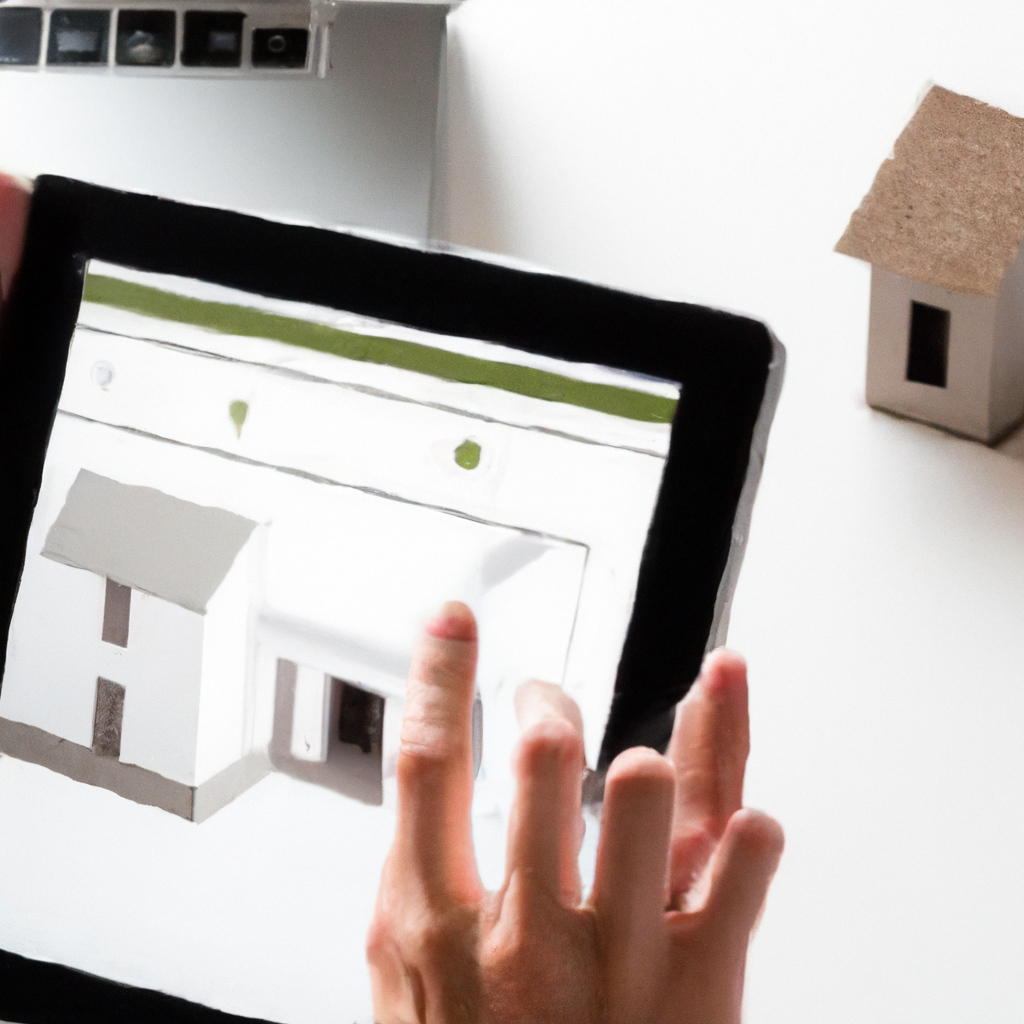Imagine transforming your humble abode into a futuristic haven, where technology effortlessly enhances your everyday life. Before embarking on the exciting journey of adopting smart home technology, it’s essential to weigh the cost considerations. This article will explore the financial aspects tied to integrating smart devices, offering insights into upfront expenses, long-term savings, and potential return on investment. Discover how smart home technology can fit within your budget while revolutionizing the way you live, all in the blink of an eye.
Initial Investment Costs
Purchase of Smart Home Devices
When starting with smart home technology, one of the initial investment costs to consider is the purchase of smart home devices. These devices can include items such as smart thermostats, smart lighting systems, smart security cameras, smart locks, and more. The cost of each device can vary depending on the brand, features, and functionality. It’s important to research and compare prices to find the best options that fit your budget and specific needs.
Installation and Setup Expenses
In addition to the cost of the devices themselves, there may be installation and setup expenses to consider. Some smart home devices may require professional installation, especially if they involve electrical wiring or complex configurations. It’s important to factor in the cost of hiring a professional if needed. On the other hand, many smart home devices are designed for easy self-installation, which can help reduce this expense.
Platform and Hub Costs
To effectively control and manage your smart home devices, you may need to invest in a smart home platform or hub. These platforms or hubs act as a central control system for all your devices, allowing you to access and control them through a single interface. Some platforms and hubs may have upfront costs, while others may operate on a subscription basis. Researching and comparing the different options available can help you find the most cost-effective solution.
Subscription or Membership Fees
Certain smart home devices and platforms may require ongoing subscription or membership fees. These fees can provide access to additional features and services, such as cloud storage for video footage, advanced analytics, or remote monitoring. It’s essential to consider these recurring costs when calculating the total cost of ownership of your smart home system. Look for options that align with your budget and provide the necessary features without unnecessary subscription expenses.
Energy Saving Benefits
Reduction in Utility Bills
One of the significant benefits of adopting smart home technology is the potential for energy savings. Smart home devices, such as smart thermostats and smart lighting systems, allow for more efficient control of energy consumption. By optimizing settings and automatically adjusting energy usage based on occupancy and environmental factors, these devices can help reduce utility bills. While the initial investment may be higher, the long-term energy cost savings can outweigh these costs.
Potential Tax Incentives
In some cases, homeowners who invest in energy-efficient smart home technology may be eligible for tax incentives or rebates. These incentives can help offset the initial investment costs and provide a financial incentive for adopting energy-saving technologies. It’s important to research and understand the tax benefits and incentives available in your area to take full advantage of potential savings.

Maintenance and Upkeep Costs
Device Repairs and Replacements
Like any technology, smart home devices may require repairs or replacements over time. Components can wear out or break, requiring the need to fix or replace them. It’s crucial to factor in the cost of potential repairs or replacements when considering the overall cost of owning a smart home system. Researching the reliability and durability of different brands and models can help minimize these costs in the long run.
Software Updates and Compatibility Issues
Smart home technology relies on software to function properly. As technology advances, software updates become necessary to maintain compatibility with other devices and platforms. While most software updates are free, there can be costs associated with upgrading older devices to ensure they remain compatible. It’s important to consider the long-term compatibility and support provided by manufacturers to minimize any potential expenses.
Professional Support or Consultation Fees
In some cases, homeowners may require professional support or consultation services for their smart home system. This can be especially true for complex installations or troubleshooting issues. It’s important to factor in the potential costs of seeking professional assistance when considering the overall cost of ownership. However, with proper research and self-education, many issues can be resolved without the need for professional help, saving you money in the process.
Security and Privacy Costs
Enhanced Security Measures
While smart home technology can enhance security, it’s crucial to consider the associated costs. Investing in high-quality smart security cameras, smart locks, and intrusion detection systems can provide a sense of security but can also come with higher initial costs. It’s essential to balance your budget with the level of security you desire and research different options to find the most cost-effective solutions that meet your needs.
Data Privacy Concerns
The integration of smart home devices into your daily life also raises concerns about data privacy. Some homeowners may choose to invest in additional measures to protect their privacy, such as encryption software or firewalls. These extra layers of security may come with associated costs. It’s important to assess your risk tolerance and decide if additional privacy measures are a worthwhile investment for you.
Insurance Premium Adjustments
Implementing smart home technology can potentially lead to adjustments in your home insurance premiums. By enhancing security measures and reducing the risk of incidents, insurance companies may offer discounts on premiums. It’s essential to contact your insurance provider to discuss any potential premium adjustments. While it may not directly affect the initial investment costs, it can lead to long-term savings on insurance expenses.

Integration and Compatibility Expenses
Additional Devices and Upgrades
As your smart home system grows, you may want to add additional devices or upgrade existing ones to enhance functionality and convenience. Adding more smart devices can come with upfront costs, especially if they require professional installation or setup. It’s important to plan for these potential expenses when considering the scalability and long-term growth of your smart home system.
Third-Party Integration Costs
While many smart home devices and platforms are designed to work seamlessly together, there can be costs associated with integrating third-party devices. Some devices may require additional equipment or adapters to ensure compatibility. It’s important to research and understand the integration capabilities and costs before investing in new devices to avoid any surprises.
Long-Term Cost Savings
Increased Efficiency and Productivity
One of the major long-term benefits of smart home technology is increased efficiency and productivity. By automating routine tasks and optimizing energy usage, homeowners can save time and money in the long run. For example, smart thermostats can learn your preferences and adjust the temperature accordingly, minimizing wasted energy. Smart lighting systems can automatically turn off lights in unoccupied rooms. These small adjustments can add up to significant cost savings over time.
Remote Monitoring and Troubleshooting
Another advantage of smart home technology is the ability to remotely monitor and troubleshoot your devices. With remote access through smartphone apps or online platforms, you can check and control your devices from anywhere. This can help identify and address any issues promptly, potentially reducing the need for costly repairs or on-site service calls.
Reduced Wear and Tear
Smart home devices can often prolong the lifespan of other household appliances and equipment by optimizing their usage. For example, smart power strips can prevent power surges and protect sensitive electronics from damage. Smart appliances can also be programmed to operate more efficiently and avoid unnecessary wear and tear. By reducing maintenance and replacement costs for other household items, smart home technology can provide long-term cost savings.
Potential Home Value Increase
Investing in smart home technology can potentially increase the value of your home. Buyers are increasingly looking for energy-efficient and technologically advanced homes, and having a smart home system in place can be a selling point. While it’s difficult to quantify the exact financial benefit, a well-implemented and comprehensive smart home system can contribute to a higher resale value.

Environmental Considerations
Sustainable Practices and Energy Conservation
Adopting smart home technology aligns with sustainable practices and energy conservation efforts. Smart thermostats, for instance, can actively adjust temperature settings to minimize energy usage. Smart lighting systems can turn off lights when no one is present in a room. By reducing unnecessary energy consumption, smart home technology can help contribute to a more sustainable future and reduce the carbon footprint of your household.
Carbon Footprint Reduction
One of the indirect benefits of smart home technology is a reduction in carbon emissions. By optimizing energy usage and reducing waste, homeowners can lower their carbon footprint. This reduction in energy consumption can positively impact the environment by conserving resources and limiting greenhouse gas emissions. Smart home technology offers an opportunity for individuals to make a meaningful impact on the environment through their daily energy consumption habits.
Impact on Electric Grid
As more homeowners adopt smart home technology, it’s essential to consider the potential impact on the electric grid. Smart home devices rely on internet connectivity, and an increased number of connected devices can put additional strain on the grid. While individual devices have a relatively small impact, the collective effect of millions of households can be significant. It’s important for utility providers and policymakers to ensure the grid infrastructure can support the increased demand from smart homes.
E-Waste Management
As technology evolves, older smart home devices may become outdated or incompatible with newer systems. It’s crucial to consider proper e-waste management when disposing of these devices. Many electronics contain hazardous materials that can harm the environment if not disposed of correctly. Recycling programs and e-waste collection centers are essential for responsible disposal. Considering the environmental impact of smart home technology includes the responsibility to properly recycle and dispose of outdated or malfunctioning devices.
User Experience and Convenience Investments
Smartphone Apps and Integration
To maximize the benefits of smart home technology, investing in smartphone apps and integration is essential. Smartphone apps allow you to control and monitor your smart home devices from anywhere, providing convenience and peace of mind. Finding apps that are user-friendly and offer seamless integration with your devices can greatly enhance your smart home experience.
Voice Control Devices
Voice control devices, such as smart speakers equipped with virtual assistants, offer a hands-free and convenient way to control your smart home devices. These devices can respond to voice commands, allowing you to control lights, adjust the thermostat, or lock doors with just your voice. They can provide an additional layer of convenience and accessibility for those with mobility challenges or busy lifestyles. While there may be upfront costs associated with purchasing these devices, their convenience and ease of use can enhance your overall smart home experience.
Automation and Personalization Features
Smart home technology offers a wide range of automation and personalization features that can enhance your daily life. From setting up schedules for your devices to suit your routines, to creating personalized scenes that adjust multiple devices with a single command, these features can make your smart home truly tailored to your needs. Investing in smart devices that offer automation and personalization capabilities can greatly improve your user experience and convenience.

Scalability and Expansion Costs
Adding New Devices
As you become more familiar with smart home technology, you may want to add new devices to expand your system’s capabilities. Adding new devices can range from simple plug-and-play options to more complex installations. It’s important to research the compatibility of new devices with your existing system and understand any additional costs involved. Planning for future expansion can help avoid compatibility issues and minimize potential costs.
Integration with Existing Systems
If you already have certain automated systems or devices in your home, integrating them with your new smart home system may require additional investments. Retrofitting existing systems to work with smart home technology can involve equipment upgrades or professional assistance. It’s important to consider the integration costs and evaluate the benefits versus the expenses when deciding if and how to integrate existing systems.
Room or Home Expansion Considerations
Expansion or renovation plans for your home should also include considerations for smart home technology. Whether adding new rooms or remodeling existing ones, factoring in the cost of integrating smart devices into these spaces is important. Wiring and installation requirements can vary based on the complexity of the project. Consulting with professionals can help you determine the costs and feasibility of incorporating smart home technology into your expansion or renovation plans.
Total Cost of Ownership Analysis
Lifetime Costs vs. Short-Term Savings
When evaluating the total cost of ownership of smart home technology, it’s important to consider both the lifetime costs and short-term savings. While the initial investment may seem high, the long-term savings on energy bills, maintenance costs, and potential insurance premium adjustments can offset these costs. Conducting a thorough analysis of the lifetime costs versus the short-term savings can help determine the true value and return on investment of your smart home system.
Considerations for Renters vs. Homeowners
Renters and homeowners have different factors to consider when it comes to the cost of adopting smart home technology. For renters, the initial investment costs may need to be balanced with the possibility of moving and leaving the smart devices behind. Choosing devices that are portable and easy to install, as well as researching lease agreements for any restrictions or requirements, can help renters make informed decisions. Homeowners, on the other hand, can enjoy the long-term benefits and potential increase in home value. Considering the length of stay and the potential for future homeownership can influence the decision-making process and investment choices.
Return on Investment Calculation
Calculating the return on investment (ROI) is an essential step in evaluating the cost considerations of smart home technology. This involves comparing the initial investment costs with the estimated savings over time. By considering all factors, including energy savings, reduced maintenance costs, potential insurance premium adjustments, and increased home value, homeowners can determine the financial benefits of adopting smart home technology. Consulting with financial professionals or using online ROI calculators can help make accurate estimations and informed decisions about the financial feasibility of a smart home investment.
In conclusion, the cost considerations when starting with smart home technology encompass several aspects, including the initial investment costs of purchasing smart home devices, installation and setup expenses, platform and hub costs, and subscription or membership fees. Energy-saving benefits, such as reductions in utility bills and potential tax incentives, can contribute to long-term cost savings. However, homeowners must also consider ongoing maintenance and upkeep costs, security and privacy costs, integration and compatibility expenses, and the potential environmental impact. Investments in user experience and convenience, scalability and expansion, and a thorough analysis of the total cost of ownership and return on investment are crucial elements in making informed decisions about adopting smart home technology.











